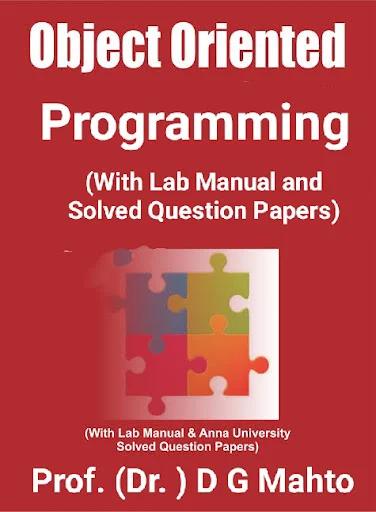Book Contents Structure of Object Oriented Programming (OOP) !!
Introduction to OOP:
- What is Object-Oriented Programming
- Key principles of OOP: Abstraction, Encapsulation,
- Inheritance, Polymorphism
- Comparison with Procedural Programming
- Real-world examples of objects and classes
Core Concepts:
- Classes and Objects:
- Defining a class with attributes (data) and methods (functions)
- Creating objects as instances of a class
- Accessing and manipulating object data
- Constructors and Destructors
- Defining a class with attributes (data) and methods (functions)
- Encapsulation:
- Data hiding and information protection
- Public, Private, and Protected access modifiers
- Getters and Setters
- Data hiding and information protection
- Abstraction:
- Focusing on essential details while hiding implementation complexity
- Interfaces and abstract classes
- Focusing on essential details while hiding implementation complexity
- Inheritance:
- Creating new classes based on existing ones (parent/child relationship)
- Single inheritance, multiple inheritance, hierarchical inheritance
- Overriding methods
- Creating new classes based on existing ones (parent/child relationship)
- Polymorphism:
- Objects of different classes responding to the same method call in different ways
- Function overloading and method overriding
- Dynamic dispatch
- Objects of different classes responding to the same method call in different ways
Implementation in a Programming Language (e.g., C++, Java): Syntax for defining classes and objects, Access modifiers and member functions, Implementing inheritance and polymorphism using language features, and Handling constructors and destructors in code.
Advanced Topics:
Design Patterns: Common solutions to recurring software design problems, Interfaces and Abstract Classes, Exception Handling, Generic Programming, and Object-Oriented Design Principles.
Real-World Applications:
Implementing a bank account system, Creating a graphical user interface (GUI), and Designing a game character system.
Important Considerations:
- A book will usually focus on a specific programming language to demonstrate concepts with code examples.
- The level of detail and complexity can vary depending on the target audience (beginner, intermediate, advanced).
- Understanding the relationship between OOP concepts and real-world scenarios is crucial.

Comments
Post a Comment
"Thank you for seeking advice on your career journey! Our team is dedicated to providing personalized guidance on education and success. Please share your specific questions or concerns, and we'll assist you in navigating the path to a fulfilling and successful career."